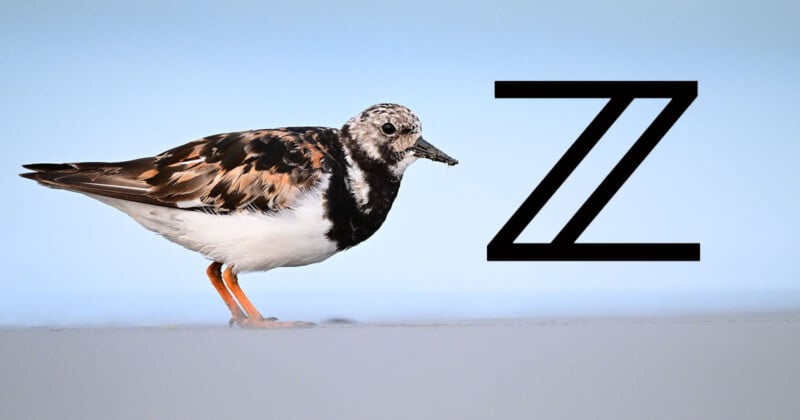
![]()
Nikon has long been a popular choice for amateur and professional wildlife photographers. Since the days of its film and digital SLR cameras, it has committed to engineering robust cameras with swift autofocus and making top-tier telephoto lenses. That same focus persists in the mirrorless age, perhaps even more.
Despite some questionable inclusions, as described by Thom Hogan, a new Nikon Z9/Z8 Professional Setting Guide — Wildlife Edition, does, at least, signal Nikon’s recognition of the large number of photographers using the Z8 and Z9 for wildlife photography.
![]()
Admittedly, the new guide is partially a way to help sell some Nikkor Z lenses, like the recommended Z 400mm f/2.8 TC VR S, Z 400mm f/4.5 VR S, Z 600mm f/6.3 VR S, Z 800mm f/6.3 VR S, Z 100-400mm f/4.5-5.6 VR S, and Z 180-600mm f/5.6-6.3 VR, among others. However, that doesn’t mean the recommended Nikkor Z lenses aren’t great options for wildlife photography, as they certainly are. The Z 600mm f/6.3 VR S and Z 800mm f/6.3 VR S are excellent choices for those who don’t have a $10,000-plus budget and value portable, lightweight lenses.
The guide breaks down the advantages of each of the recommended lenses, and includes some beautiful photos from numerous Nikon Ambassadors, like friend of PetaPixel Michelle Valberg.
![]()
There are also some practical tips, such as researching the location and behavior of animals, keeping a safe distance, and respecting wildlife. The problems Hogan points out are especially evident in the camera settings section.
“On page 16, Basic Camera Settings, we start to get our first taste that whoever wrote and edited this document doesn’t actually use Nikon gear to take wildlife photos: White balance of Auto. First of all, it almost certainly should be Natural Light Auto, since very little wildlife photography is done under artificial light. But if it’s going to be Auto, which version of that should it be? It’s kind of important to get animal colors correct, after all,” Hogan writes.
![]()
Nikon’s subject detection AF probably doesn’t get as much attention as it deserves in the user guide, relegated to a single paragraph. Nikon recently added improved bird-detection autofocus to its flagship mirrorless cameras via firmware update, and Nikon Ambassador Kristi Odom has demonstrated its utility in some beautiful work. By combining 3D-tracking and subject detection, there are very few situations that prove too challenging for the Nikon Z8 and Z9.
An (Imperfect) Guide Reflects Nikon’s Near-Perfect Approach to Wildlife Photography
These nitpicks aside, the very existence of the guide spurred this editorial, as the Nikon Z system is genuinely in as good a place as any camera system when it comes to wildlife photography. While photographers could make a strong case for a camera like the OM System OM-1 Mark II, which is undoubtedly a fantastic wildlife camera, it’s hard to argue against the overall versatility and flexibility of the Nikon Z system, especially as Nikon has released some of the best telephoto lenses of all time in the last few years.
![]()
Nikkor Glass Leading the Charge
Very few lenses are missing from Nikon’s Nikkor Z lineup, especially in the telephoto range. Perhaps the most notable omission is a native Nikkor Z 300mm f/2.8 lens, although as demonstrated by Sony only just launching a 300mm f/2.8 lens for E-Mount cameras, perhaps the 300mm f/2.8 lens is not quite as demanded these days as it once was.
![]()
Another Nikon F-mount lens that has yet to make its way to the Nikkor Z system is the 500mm f/4. Like the 300mm f/2.8, the 500mm f/4 has become less common in the mirrorless age. There are a few potential reasons for this, but I think the biggest is that the 500mm f/4 used to be a “lightweight” super-telephoto lens for DSLR cameras, at least compared to the 400mm f/2.8 and 600mm f/4 primes. However, as optical technology has improved, the “lightweight” lens is now the Z 600mm f/6.3 VR S.
![]()
For what it’s worth, Nikon could also consider bringing its 180-400mm f/4 F-mount lens to a native Nikkor Z design, although there’s always the FTZ II adapter to solve that issue.
![]()
The Z8 and Z9 Do It All
As for cameras, the Nikon Z8 and Z9 are remarkable for wildlife photography. They combine 45.7 megapixels of resolution with incredible shooting speeds and autofocus performance. For wildlife in particular, the resolution is there to do a bit of cropping to get closer to distant subjects, the autofocus and subject-detection modes are superb, the camera shoots fast enough to catch nearly all action, and the high ISO performance is nothing to scoff at.
![]()
Nikon’s Wildlife Legacy Lives On In the Z System
When Nikon first introduced its Z system, I, a longtime Nikon DSLR shooter, had some serious concerns about whether Nikon had lost its way. The Nikkor Z telephoto offerings were seriously lacking and the first few Z cameras didn’t deliver the sort of autofocus performance I expected. Nikon was behind. There were hints of potential, and the company’s pedigree inspired some optimism. But eventually, you need results.
![]()
![]()
![]()
![]()
![]()
Those have come in a big way and via every possible avenue: camera features, performance, firmware, and perhaps most importantly, lenses. Everything that I wanted as a passionate — albeit mediocre — wildlife photographer, Nikon has delivered.
For my money, as great as some other camera systems are for wildlife photography, I’d be hard-pressed to give the crown to anyone but Nikon.
Image credits: Nikon






